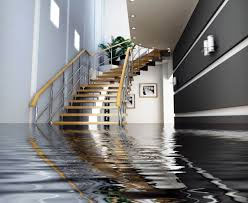 Although it would be so much more fun to only share positive and uplifting information on the Restumping Melbourne blog, let’s be honest- it’s not realistic. One of our most prominent goals as a company, is to ensure that we’re arming our valued customers with the know-how to make the right decisions for you, when it comes to your home. This means that you need to know the good, the bad and the ugly. In our last post, we covered an equally negative intruder- asbestos. Today, we shift focus and talk about water. Here’s the difference… asbestos is objectively a very negative intruder to your home or business. Water… well, she’s a bit more subjective. Though she does a lot of good in other areas of your life, let’s talk about the adverse effects that she can have on your home, and how to potentially circumvent these situations.
Although it would be so much more fun to only share positive and uplifting information on the Restumping Melbourne blog, let’s be honest- it’s not realistic. One of our most prominent goals as a company, is to ensure that we’re arming our valued customers with the know-how to make the right decisions for you, when it comes to your home. This means that you need to know the good, the bad and the ugly. In our last post, we covered an equally negative intruder- asbestos. Today, we shift focus and talk about water. Here’s the difference… asbestos is objectively a very negative intruder to your home or business. Water… well, she’s a bit more subjective. Though she does a lot of good in other areas of your life, let’s talk about the adverse effects that she can have on your home, and how to potentially circumvent these situations.
If we were to ask you to call out examples of water damage, we’re pretty sure that floods would top the list. Floods in homes, caused by standing water, are indeed one of the worst adverse effects that water can have on the structure of your property. Depending on how long the water is standing before the situation is mitigated, there can be a domino effect of other challenging situations.
But there are also other dangers, which are a direct result of water. The first is an obvious irritation for the team members of Restumping Melbourne- damage to the structure of your home. When we reference the structure of the home, we’re referring to the foundation and all of the beams that support the floors, walls and roof of your property. After all, if you get any material wet, it will most likely not retain the same level of strength and fortitude. The same is true for most building materials, when they’re inundated with water. You immediately say goodbye to the integrity of the structure. You also open the door to microbial growths.
Next up on the list- mould. It’s important to note that mould’s unsightly look and smell are not the full extent of the damage that it can cause. Mould can have extremely negative impacts on your health, leading to irritation of the skin, the nose, the throat and the eyes. You’ll never be able to be able to get rid of 100% of mould spores, because they also travel through the air. But these spores are far less dangerous. It’s the mould spores that land on standing water, that are the real troublemakers. When you eliminate excess amounts of standing water, you can check mould spores off of your pesky to-do list.
Finally, you’re going to notice aesthetic damage. Aesthetic damage can mean any number of things. It may mean that the standing water has impacted the fresh coat of paint that you just applied to the exterior of the structure. It can also mean washing away landscaping design and fixtures. It can even mean additions like fences or window pains, will suffer the consequences.
Today, we hopefully piqued your interest with the warning signs. Stay tuned for future posts, on ways to avoid these scenarios!
